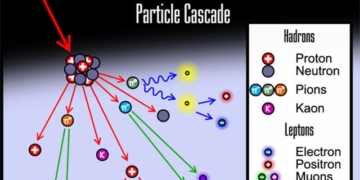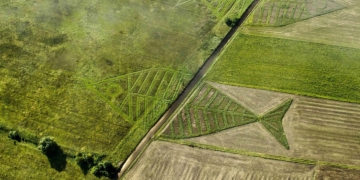With the conclusion of the Franco-Prussian War in 1871, France entered the Belle Époque (Beautiful Era), marked by a significant rise in the middle and upper classes, leading to numerous technological advancements and architectural achievements.
Back in 1889, France hosted the Exposition Universelle, a grand world fair, where the highlight of the event was the Eiffel Tower, a temporary structure that has since become France’s most beloved national monument. This is what truly happened when the Eiffel Tower was unveiled to the world in 1889.
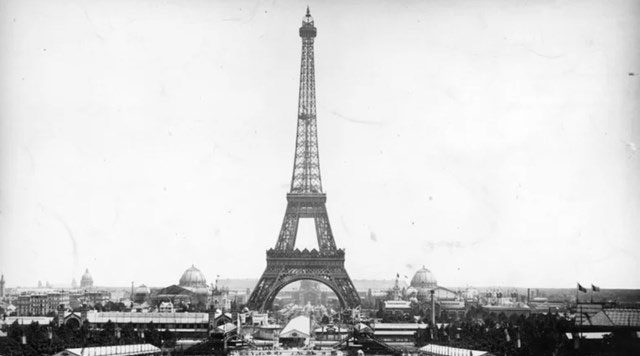
Many were thrilled to see the Eiffel Tower for the first time. (Photo: Grunge).
Gustave Eiffel Presided Over the Opening Ceremony
In 2017, France began a 15-year renovation project for the Eiffel Tower, costing over $300 million. This is an extraordinary development considering the tower was originally intended to stand for only two decades. Today, the tower and Paris are so intertwined that it is hard to imagine the city’s landscape without the Eiffel Tower.
However, when the Eiffel Tower was revealed to the world on Sunday, March 31, 1889, with Gustave Eiffel himself presiding over the event, the fate of the tower was still uncertain. Architect Eiffel allowed the first curious visitors to tour his namesake tower, the tallest man-made structure in the world, a record the tower would hold for four decades.
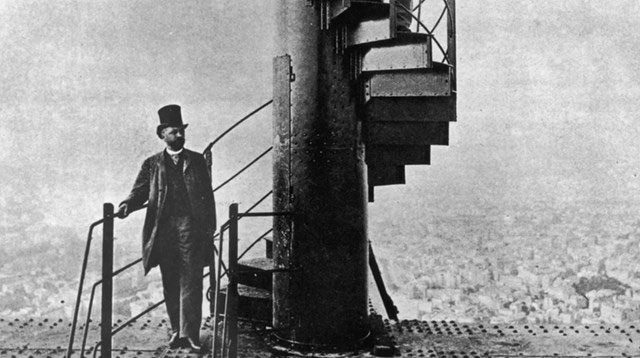
Architect Gustave Eiffel presided over the opening ceremony. (Photo: Grunge).
People traveled from all over the world to enjoy the breathtaking views that the Eiffel Tower offered. The tower continued to be a famous magnet, attracting visitors such as the Prince of Wales (future King Edward VII), the Princess of Wales, French actress Sarah Bernhardt, King George I of Greece, the Shah of Persia, and Prince Baudouin of Belgium.
Perhaps the most famous visit was that of Sadi Carnot, the President of the French Republic. He rewarded each worker, including the printing staff of the newspaper Le Figaro located inside the tower, with 100 francs.
Alongside dignitaries and politicians, 200 workers from the Eiffel Tower attended the festivities. This group included 150 construction workers and 50 designers and engineers, the hardworking individuals who turned Eiffel’s vision into reality. The feat achieved by these workers was monumental, involving the assembly of 18,038 metal parts using 2,500,000 rivets. The tower required up to 7,300 tons of iron and 60 tons of exterior paint, along with five elevators.
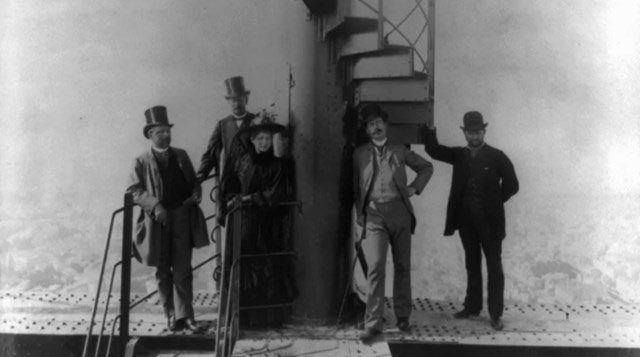
People joined in the joy of the tower. (Photo: Grunge).
When the Eiffel Tower opened in 1889, the elevators were not yet complete. This meant that only the most adventurous guests accompanied by the guide, Gustave Eiffel himself, ascended to the top of the tower.
In the first week since its unveiling, nearly 30,000 people climbed the 1,710 steps of the tower, which stands over 300 meters tall, marveling at the panoramic views that Eiffel had envisioned. Despite the temporary nature of the structure, crowds appreciated the achievement at the time, which was dubbed “The Iron Lady,” a masterpiece of modern architecture.
The elevators of the Eiffel Tower began operating on May 26, provided by a well-known American company renowned for its high standards of quality. Notably, when the elevators finally opened, a larger number of visitors flocked to the tower to enjoy the best views of the City of Light, Paris.
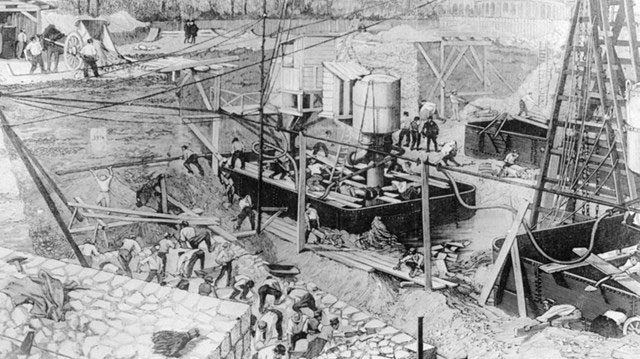
A painting depicting the construction of the Eiffel Tower. (Photo: Grunge).
Controversy Surrounding the Design of the Eiffel Tower
Despite the glowing reception that Gustave Eiffel’s urban monument received from the crowds, a group of individuals vehemently opposed his vision. This group included some of the most influential artists, architects, and writers of the time, who believed that the Eiffel Tower was a “tragic street lamp.”
From skyscrapers with high-speed elevators to airplanes, technology has transformed aerial views into a standard part of human life.
The Eiffel Tower also sparked a movement regarding the future of architecture and urban landscapes, exciting individuals to attempt to break architectural records while enjoying the breathtaking views of France’s leading city. Among the most notable was a baker from Landes who walked on stilts before climbing 347 steps to the first level.
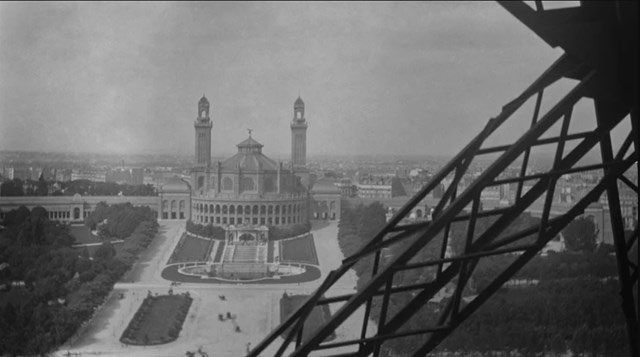
Anyone could enjoy the views that the tower provided. (Photo: Grunge).
It was declared that the Eiffel Tower represented “not only the art of modern architecture but also the turning point of the industrial and scientific age we live in.” However, Eiffel achieved much more than that. During the construction of his great iron monument, Architect Eiffel engraved the names of 72 scientists on the first level of the tower.
The Inauguration of the Eiffel Tower proved to be a spectacle of charm and grandeur. It began with the official opening on March 31 and then opened to the public on May 15, coinciding with the start of the Exposition Universelle festival. Millions of tourists flocked to Paris, with 1,953,122 people specifically coming to admire the Eiffel Tower. Each day, about 12,000 visitors would arrive at the tower.
France had endured years of political turmoil leading up to 1889, including defeat in the Franco-Prussian War and the Paris Commune uprising, but the nation overcame these challenges.
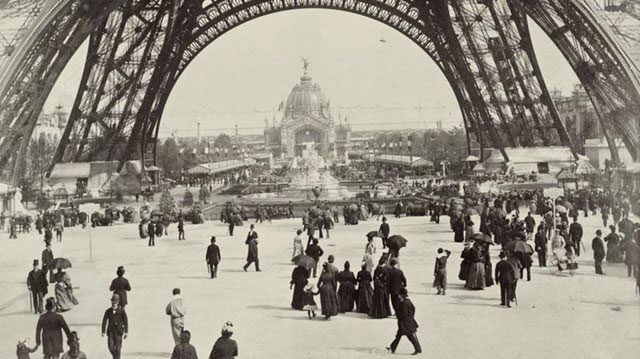
The inauguration of the Eiffel Tower proved to be a spectacle of charm and grandeur. (Photo: Grunge).
Every evening, the Eiffel Tower was illuminated with gas lights in a three-colored beacon reflecting the colors of the nation, creating an unforgettable sparkling sight. An employee of the Exposition Universelle noted, “Everything sparkles brilliantly, dazzling in a perpetual feast for the eyes.”
The Eiffel Tower was filled with unique shops and even the offices of Le Figaro and a post office. Yet, one of the most intriguing aspects of the tower remained Gustave Eiffel’s office, located at the top of the tallest structure in the world. There, he welcomed celebrities like Thomas Edison and Charles Gounod to discuss and enjoy the stunning panoramic views. Interestingly, Gounod, a French composer, had once signed a petition opposing the construction of the Eiffel Tower.
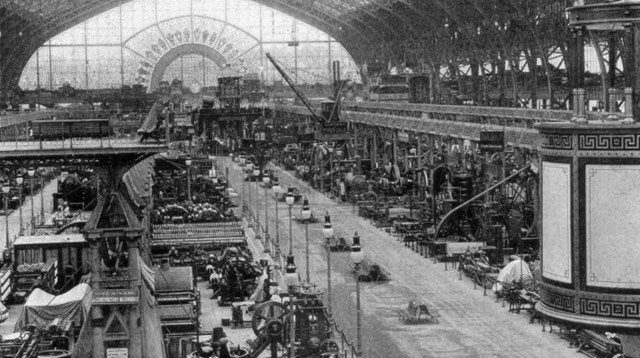
The Exposition Universelle fair, where the Eiffel Tower was first introduced. (Photo: Grunge).
After Eiffel’s death, his office was used as a storage space for wax sculptures of Gustave Eiffel with Thomas Edison and Eiffel’s daughter, Claire Eiffel. This evokes the scene when the famous American inventor visited Paris to attend the 1889 Universal Exhibition for himself. At this meeting, Edison gifted Eiffel one of his earliest recording mechanisms.
The people of Paris felt proud to gaze upon an architectural masterpiece representing all that embodies Paris as the heart of French democracy, modern art, and architecture, becoming a symbol of pride and the future of France.
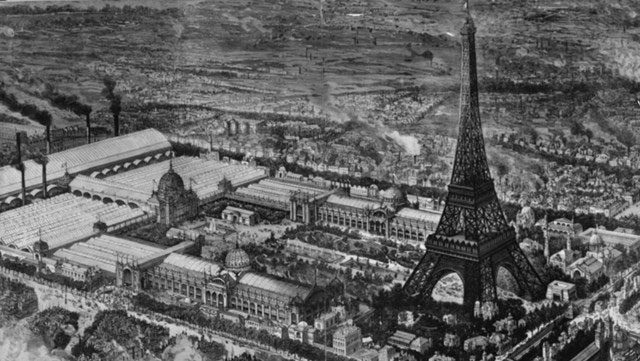
The Eiffel Tower is regarded as a symbol of 19th-century Paris. (Photo: Grunge).




















































